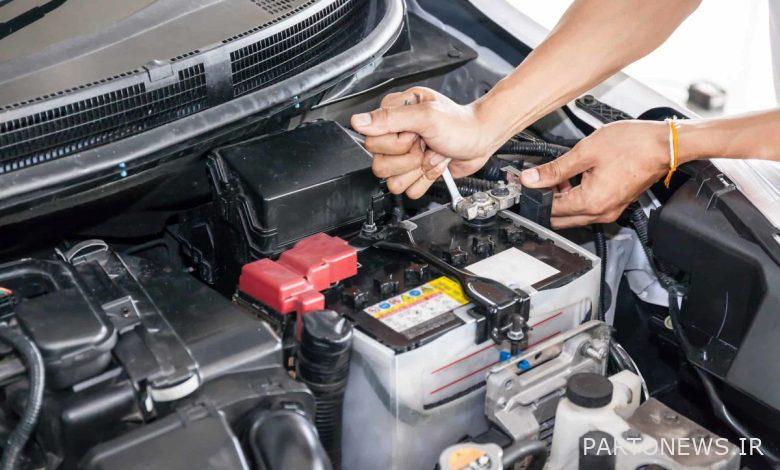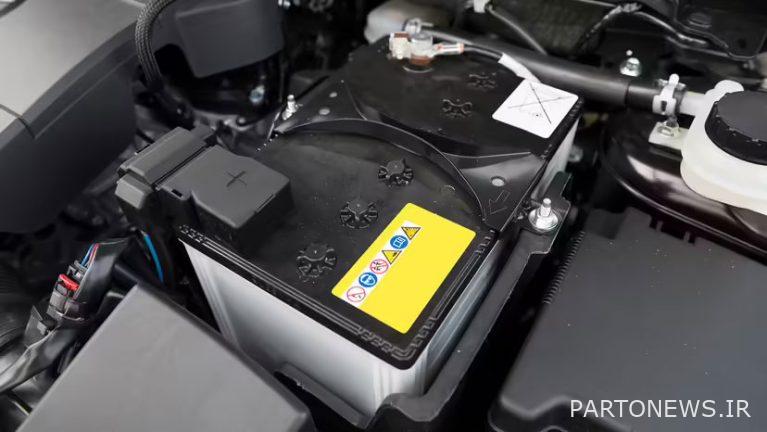When should the car battery be replaced?

According to the online economy report, depending on the area where you live, driving style, conditions of the charging system and several other factors, the car battery can work for up to four years on average. It is worth noting that the car battery usually does not show signs of failure and you suddenly notice that it and the whole car are out of order.
Although the lead-acid battery has not changed much over the last 100 years, it has become easier to test and inspect. Battery testers currently cannot show the chemical reactions in the battery, but they provide a kind of snapshot of the battery without chemical content before and after the test, which helps you to know the condition of the car battery.
So, we know the simple rule of the battery: you can use the battery for about 4 years, and then you should think about replacing it. During these 4 years, you can recognize signs of failure and prepare yourself for battery replacement.
But due to the nature of the chemical compounds inside the battery, the battery may fail faster than you expect and may even last you a few more years.
Keep in mind that hybrid and electric vehicle batteries are slightly different from the simple examples used in internal combustion vehicles, and this article focuses on simple gasoline vehicle batteries.
When it comes to car maintenance, the word “normal” is estimated by some factors that exist on paper but are rarely seen. For example, a battery has an average and normal lifespan of 4 years under normal conditions. Normal in this case means a full battery charge cycle. Also, the battery should not be placed in very high or low temperatures and work with a reliable and stable charging system. Also, there should not be too much pressure on the battery.
But normal is not always normal! In the real world there are high and low temperatures, the car is driven on rough roads, there are short trips and the use of various gadgets and systems puts a lot of strain on the battery.
If you take a look at the lead-acid battery of cars, you will understand the effect of these factors on battery life. Materials such as lead and lead dioxide are inside the plastic box of the battery. The plates inside the battery are also in contact with a mixture of water and sulfuric acid and form an electrolyte. This solution allows electrons to flow between the plates, and this flow of electrons is actually electricity.
Various factors can affect this chemical reaction. Vibrations caused by driving on rough roads or poorly installing the battery in a good place can damage these plates. Very high temperature also accelerates the reactions and shortens the life of the battery. Also, very low temperature slows down reactions and has a negative effect on battery life; Therefore, some batteries have a protective coating to withstand extreme heat and cold.
Driving style can also affect the reactions inside the battery. Starting the car requires a lot of electricity, so the charging system must get help from the battery. In this way, if you travel a short distance or go on many trips, the battery will never be fully charged. This multiple undercharge state leads to acidic layering.
Inside the battery, we have the electrolyte solution that moves from the homogeneous part to the vertical side. The upper half of the solution is a light acid, while the lower half is a heavy acid. The light acid layer will begin to eat away at the plates and the heavy acid solution will begin to compensate to meet the vehicle’s electrical needs with over designed performance. This leads to reduced battery life even though the battery shows no signs of failure in routine tests.
Signs of car battery problems
Batteries are so reliable and simple that drivers often forget about them and only notice this part when it’s gone. If you pay attention to the car battery and perform some routine tests, you will reduce the risk of staying on the road. Batteries are relatively inexpensive components for what they do.

The most obvious sign of a problem with the battery is that it stops working. However, since the battery is part of a larger system connected to other parts of the car, a dead battery may indicate a deeper problem. If there is another problem in the car’s electrical system, such as a weak alternator, the battery may produce less electricity than normal.
The best way to test the battery is to use electronic testers. You or a trained technician will connect the tester to the battery and show a picture of the battery’s condition and whether or not it needs to be replaced.
There are various testers in the market. Some are connected to the battery and some are placed in the cigarette lighter to show the battery charge level. If you connect the tester to the battery, be sure to use gloves and protective glasses to avoid possible battery acid damage.
The battery itself shows signs of failure. The first point is battery life. If the battery has a lifespan of more than 3 or 4 years, then it is not far off to cause problems. The second point is driving habits. Remember that short trips and long periods of not using the car will reduce the battery life. The third issue is to look at the battery itself. Corrosion and leakage on the battery will mean the end of its life.
If the battery has a protective cover, remove it so you can see under the battery. See also on battery terminals. You can clean the battery terminals with water. Just don’t forget to use gloves and goggles because the electrolyte solution contains sulfuric acid and can damage the skin. Finally, be sensitive to the smell of sulfur or rotten eggs, which can be another sign of battery failure. The smell related to the heating of the battery can also be another sign.
How to replace the car battery
Replacing a car battery is a relatively easy task and can be done by yourself or an experienced mechanic. There are various brands of batteries in the market that you can buy the best and most suitable battery with a little inquiry; But the brand name is not important. What is important is the date of manufacture and expiration of the battery, suitable amperage, reserve capacity and group size.
Date of manufacture: Batteries usually have a date of manufacture and must be sold within 6 months of the date of manufacture. Before buying, carefully check the production date. In the battery of foreign cars, the production date is usually coded. Most codes start with a letter that indicates the month of production: A for January, B for February, etc. The number on the code also indicates the year of production. For example, 0 is used for the year 2000 or 1 for the year 2001.
Group size: This factor indicates the external dimensions and poles of the battery. Make sure that the size of the battery group you are considering matches with the previous battery. Fortunately, most car battery sellers know this very well.
Cold crank amperage: This factor shows the starting capacity of the car battery at minus 17 degrees. High amperage means better starting of the car in cold weather. Most batteries have this standard, although some are manufactured with the CA symbol, which indicates a temperature of zero degrees Celsius.
Reservation capacity: This criterion is hard to find, but it is one of the most useful criteria for choosing a battery. Reserve capacity indicates how long your car can run on the battery if the alternator fails.
As it was said, this information about gasoline cars was simple, but if you drive a hybrid or plug-in hybrid car, you should know that batteries are a very important element of the driving force.

The general rule of thumb for hybrid vehicle battery replacement is about 10 years, although there are many variables because different batteries are manufactured for different vehicles. Also, these cars are brand new, so there isn’t enough data to show what their batteries are capable of.

